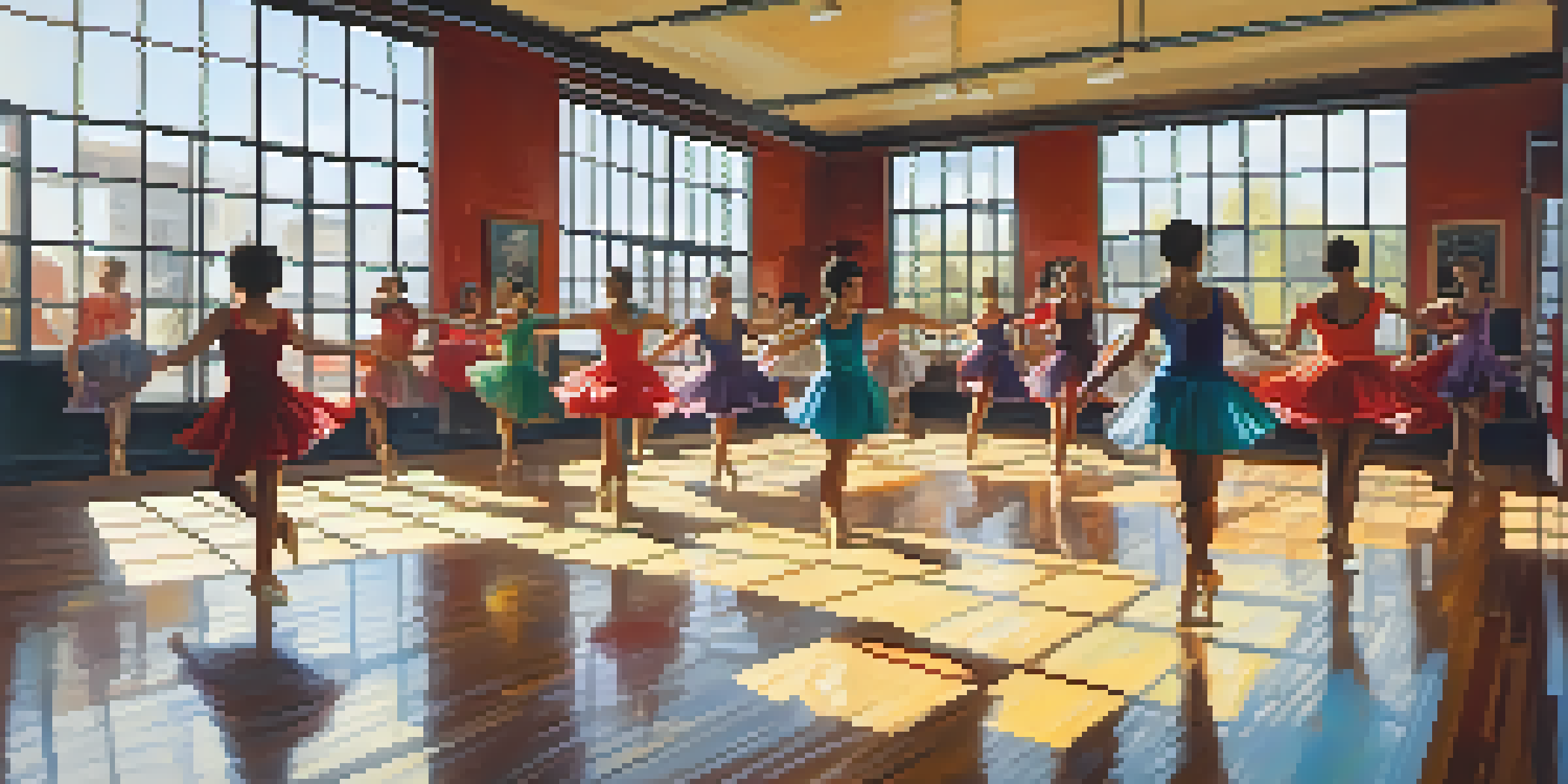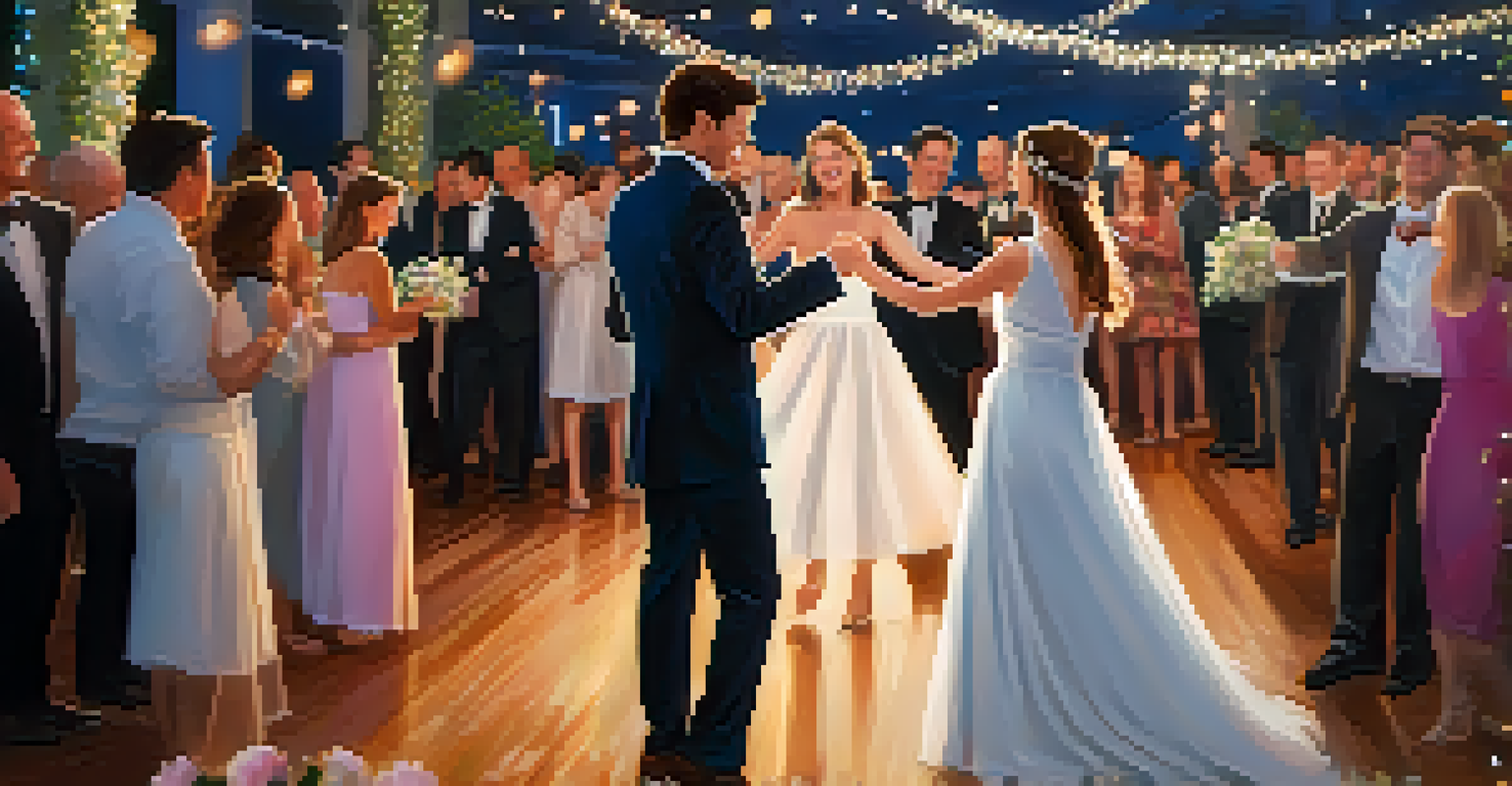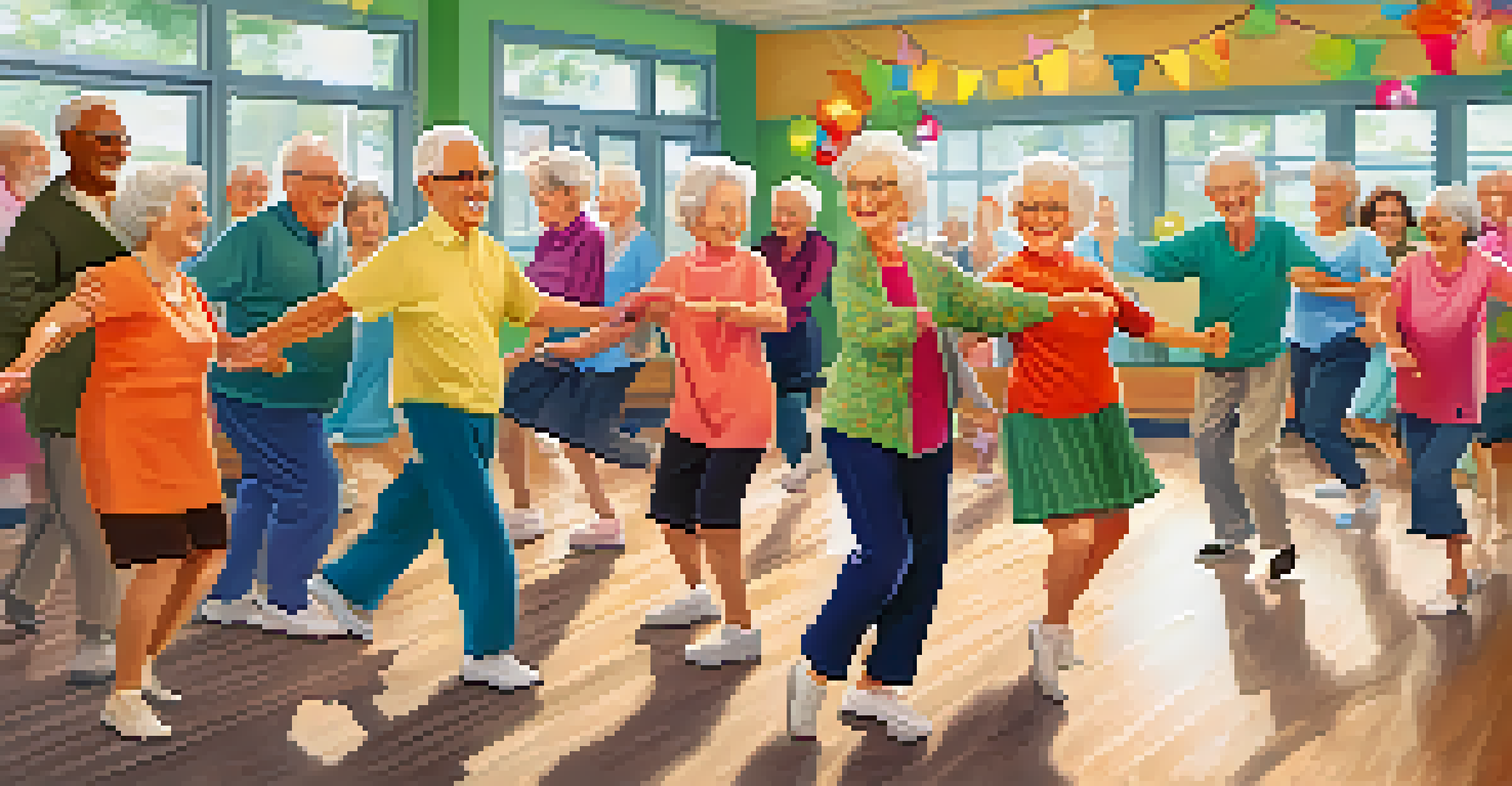How Dance Movements Influence Memory Recall Processes

The Connection Between Dance and Memory
Dance and memory might seem worlds apart, but they share a fascinating connection. Engaging in dance activates various parts of the brain, particularly those involved in memory formation and retrieval. This interplay helps us not just remember the steps but also associate emotions and memories with those movements.
Dance is the hidden language of the soul.
For instance, think about how a particular song can transport you back to a specific moment in time. The rhythm and movements involved in dance can create similar associations, reinforcing memory retrieval through physical activity.
By understanding this connection, we can better appreciate how dance serves as a powerful tool for improving our cognitive functions and enhancing memory recall.
How Dance Engages the Brain
When you dance, you're not just moving your body; you're also engaging your brain in a unique workout. Dance requires coordination, timing, and rhythm, which stimulate neural pathways and create new connections. This cognitive engagement is what makes dance a potent memory enhancer.

Research has shown that learning dance routines can improve spatial memory and the ability to remember sequences. As dancers practice, their brains adapt, making it easier to recall not just the dance steps but also other information.
Dance Boosts Memory Recall
Engaging in dance activates brain functions that enhance memory formation and retrieval.
This process highlights the importance of physical activity in supporting brain health and memory, suggesting that dance might be one of the most enjoyable ways to keep our minds sharp.
The Role of Emotions in Memory Recall
Emotions play a critical role in how we remember information, and dance is a powerful medium for emotional expression. When we dance, we often tap into our feelings, which can help solidify memories. This emotional connection makes it easier to recall experiences associated with specific movements or songs.
Memory is the treasure house of the mind wherein the monuments thereof are kept and preserved.
For example, think about a wedding dance: the joy and love felt during that moment can create lasting memories, reinforced every time the song is played. The emotional impact of dance can act as a catalyst for memory recall, bridging the gap between movement and memory.
Thus, the intertwining of dance and emotions not only enriches the experience but also enhances our ability to remember.
Choreography and Cognitive Function
Choreography, or the design of dance movements, requires critical thinking and creativity. This process of creating and memorizing dance routines encourages cognitive flexibility, enhancing our brain's ability to adapt and learn. As dancers learn new choreography, they stimulate various brain regions responsible for memory and learning.
Moreover, the cognitive demands of choreography can lead to improved problem-solving skills. This is because dancers must remember sequences, make quick decisions, and coordinate movements, all of which engage different cognitive processes.
Emotions Enhance Memory Links
The emotional connections formed during dance help solidify and recall memories tied to specific movements.
In essence, learning choreography not only enriches the dance experience but also contributes to overall cognitive development and memory enhancement.
Dance Styles and Their Effects on Memory
Different dance styles can influence memory recall in unique ways. For instance, structured styles like ballet require precision and repetition, which can enhance rote memorization. On the other hand, freeform styles like contemporary dance encourage improvisation, which can foster creative memory recall.
Each dance style engages various cognitive processes, showing that the type of movement can impact how we remember. For example, a salsa dancer might find it easier to recall social interactions due to the interactive nature of the dance.
Ultimately, exploring diverse dance styles can provide different cognitive benefits, making it a rich field for enhancing memory.
Social Dancing and Memory Recall
Social dancing is not just fun; it also has significant cognitive benefits, particularly for memory recall. Engaging with others in a dance setting fosters social connections, which can boost emotional well-being and enhance memory capabilities. These interactions create strong associative memories that are often easier to recall.
Consider how group dance classes create a sense of community, prompting shared experiences that strengthen memory recall. The bonds formed during social dancing can lead to lasting memories tied to both the dance and the people involved.
Choreography Develops Cognitive Skills
Learning and creating choreography stimulates cognitive flexibility and improves problem-solving abilities.
This emphasizes how social connections through dance can create a rich tapestry of memories, making recollection more vivid and enjoyable.
Practical Applications of Dance for Memory Improvement
Given the profound effects of dance on memory, incorporating dance into daily life can be beneficial. Whether it's taking a dance class, joining a dance group, or simply dancing at home, these activities can significantly boost cognitive function and memory recall. It’s a fun and enjoyable way to keep the mind active!
Additionally, rehabilitation programs for memory-related conditions often include dance therapy. This approach harnesses the physical and emotional benefits of dance to help improve memory and cognitive function in patients.

Ultimately, recognizing the practical applications of dance can inspire us to embrace movement as a means to enhance our memory and overall cognitive health.